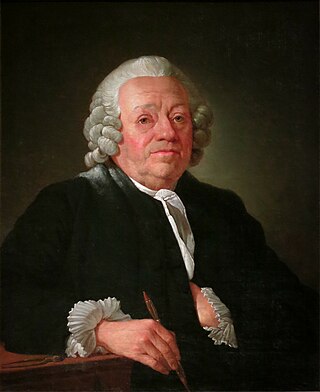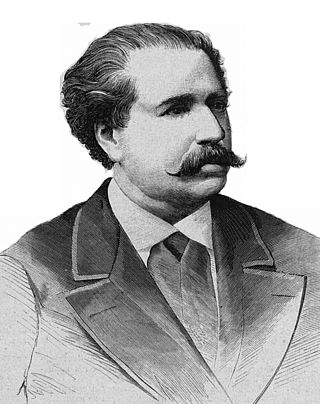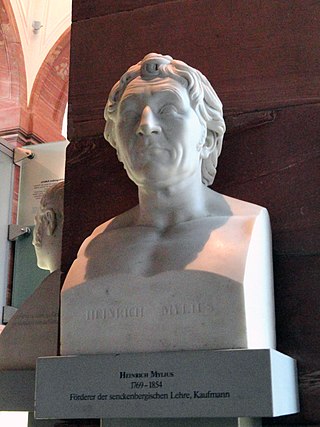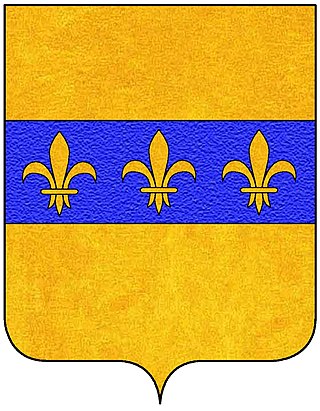
Baldassarre Cossa was Pisan antipope John XXIII (1410–1415) during the Western Schism. The Catholic Church regards him as an antipope, as he opposed Pope Gregory XII whom the Catholic Church recognizes as the rightful successor of Saint Peter. He was also an opponent of Antipope Benedict XIII, who was recognized by the French clergy and monarchy as the legitimate Pontiff.

Piero di Lorenzo de' Medici, called Piero the Fatuous or Piero the Unfortunate, was the lord of Florence from 1492 until his exile in 1494.

Ladislaus the Magnanimous was King of Naples from 1386 until his death and an unsuccessful claimant to the kingdoms of Hungary and Croatia. Ladislaus was a skilled political and military leader, protector and controller of Pope Innocent VII; however, he earned a bad reputation concerning his personal life. He profited from disorder throughout Italy to greatly expand his kingdom and his power, appropriating much of the Papal States to his own use. He was the last male of the Capetian House of Anjou.

Jean-Nicolas Servan, also known as Giovanni Niccolò Servandoni was an Italian decorator, architect, scene-painter, firework designer and trompe-l'œil specialist.

Pietro Cossa was an Italian dramatist.

Francesco Maurolico was a mathematician and astronomer from the Kingdom of Sicily. He made contributions to the fields of geometry, optics, conics, mechanics, music, and astronomy. He edited the works of classical authors including Archimedes, Apollonius, Autolycus, Theodosius and Serenus. He also composed his own unique treatises on mathematics and mathematical science.
In textual and classical scholarship, the editio princeps of a work is the first printed edition of the work, that previously had existed only in manuscripts. These had to be copied by hand in order to circulate.

Giovanni Agnelli was an Italian businessman who founded the Fiat S.p.A. car manufacturing in 1899.

Giacomo Bosio (1544–1627) was a brother of the Order of St. John of Jerusalem and the historian of this order. He was the uncle of the Maltese antiquary Antonio Bosio.

Giovanni Francesco Guidi di Bagno was an Italian cardinal, brother of cardinal Nicola Guidi di Bagno and nephew of cardinal Girolamo Colonna.

Matteo Capcasa was a printer and typographer from Parma, in Emilia in central Italy, which at that time was subject to the Duchy of Milan. He was active as a book printer and typographer in Venice from 1485, when he printed a Vocabularium utriusque iuris and an anonymous Fior di virtù. His workshop was in San Paterniano, where he worked with his brother Giovanni.

The House of Barozzi was an aristocratic Venetian family that belong to the Venetian nobility. Members of the family became sailors, clerics and men of learning. They were lords of Santorini and Thirassia, and held military fiefs on the island of Crete. Members of the family were involved in the conspiracy of Bajamonte Tiepolo against the Doge of Venice in 1310.

The Premio Mylius was an Italian prize for painting. It was established by the Austrian industrialist Heinrich Mylius in 1841 and awarded by the Accademia di Brera in Milan, which at that time was under Habsburg rule. In 1856 there were two types of award, an annual prize of 700 Austrian lire for a painting in oils, and a biennial award of 1000 lire for fresco work. It was awarded until the outbreak of the Second World War.
Vieri di Cambio de' Medici was a Florentine banker, a distant relative of the Medici banking dynasty.

Giovanni Luca Chiavari was the 98th Doge of the Republic of Genoa.
Giovanni de Primis, O.S.B. (1570–1623) was a Catholic cardinal.

The Martyrdom of Saint Maurice and his Comrades is an illuminated manuscript commissioned as a diplomatic gift to Giovanni Cossa by the Venetian general Jacopo Antonio Marcello (1399–1464). The smallest miniatures are attributed to an unknown Lombard artist in the International Gothic style and the larger ones to Jacopo Bellini or Giovanni Bellini. It passed through several owners before in 1785 being acquired by the collection now known as the Bibliothèque de l'Arsenal in Paris.
Giovanni Battista Eliano was a Jesuit priest and scholar of Oriental languages.

The Querini family or Quirini was an old Venetian patrician family. They claimed an ancient Roman heritage, but their traceable history goes back to the 11th century. The family divided into many branches.


















